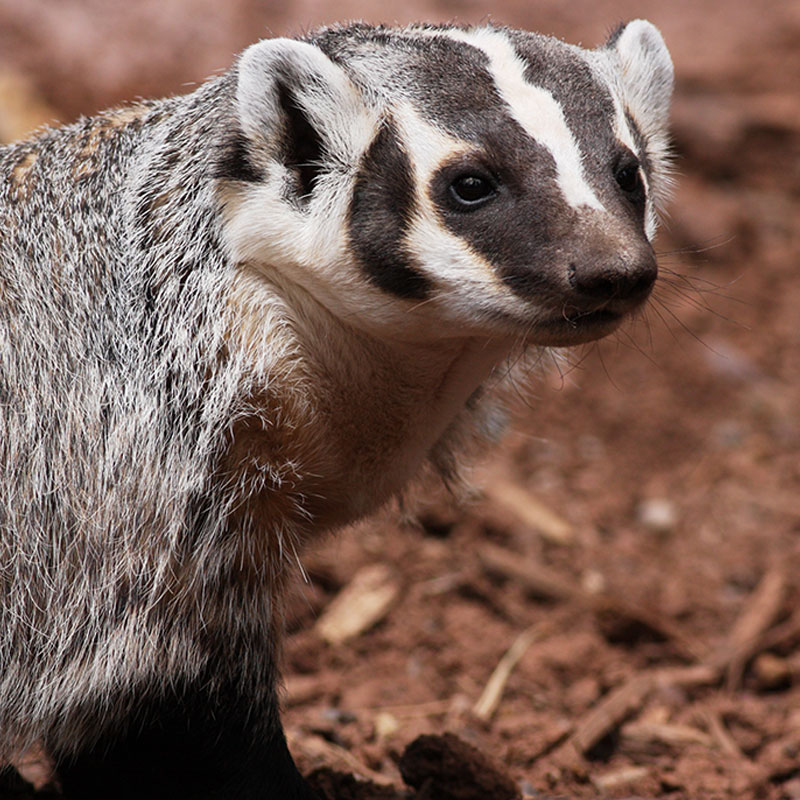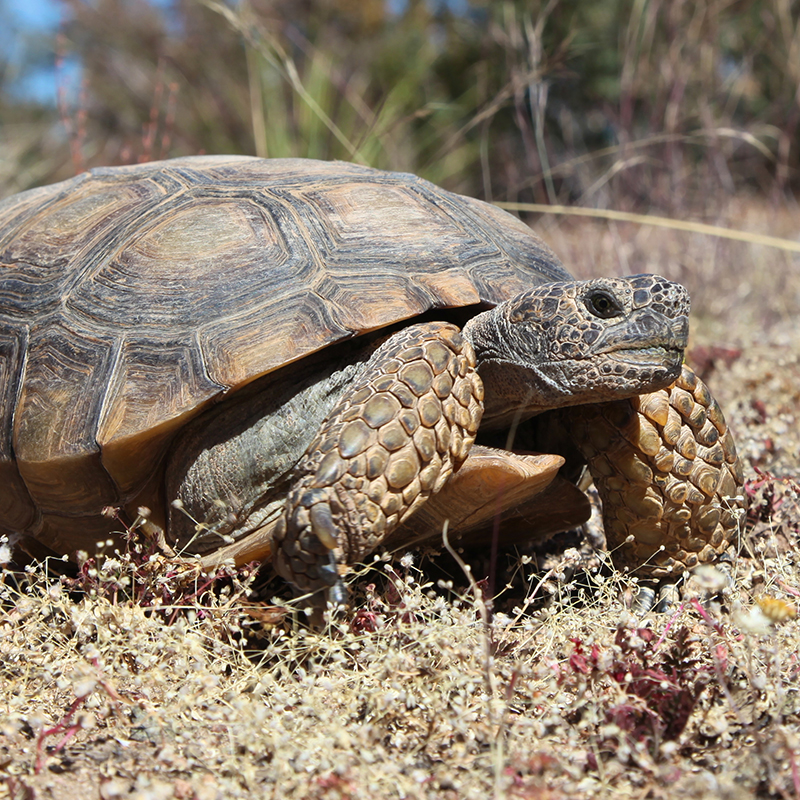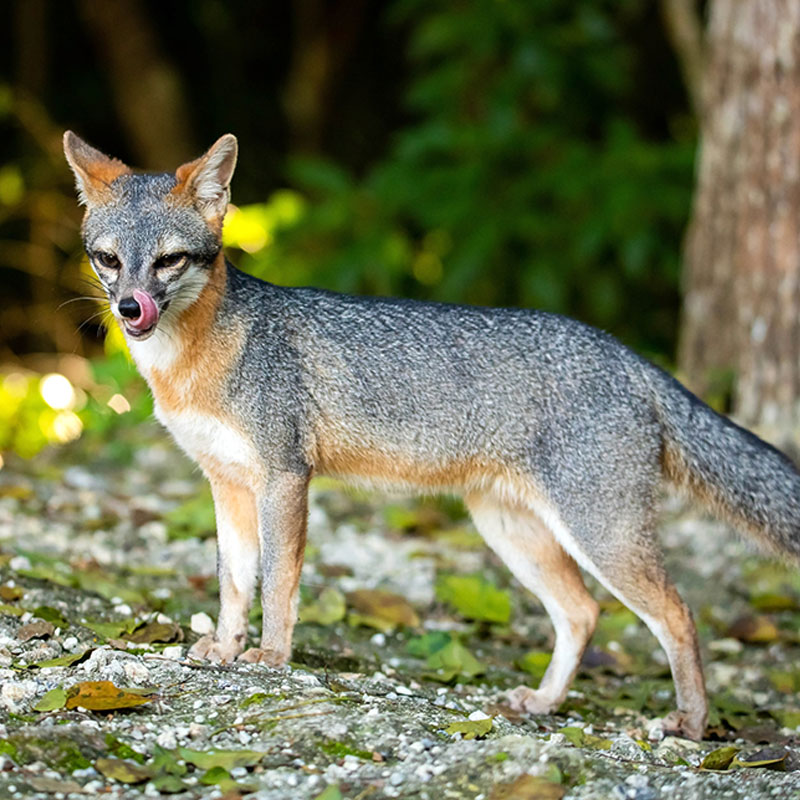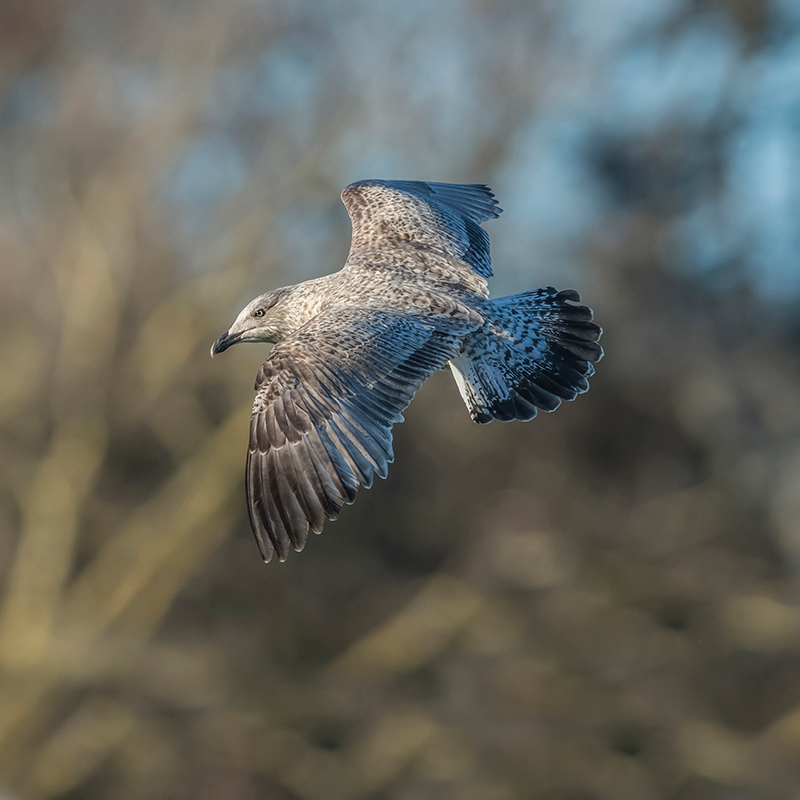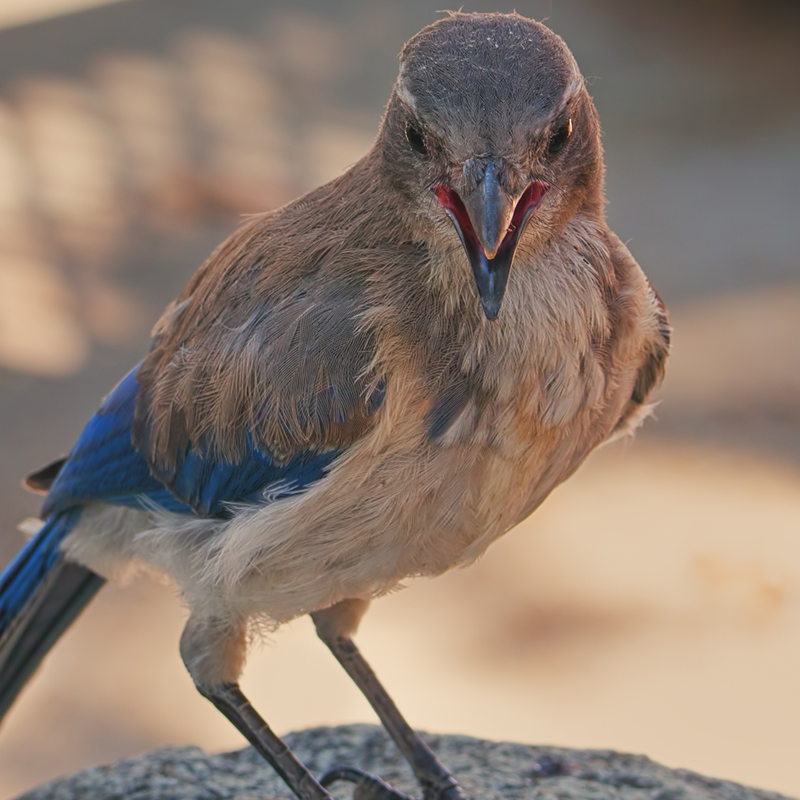
The striped skunk is a stoutly-built, short-limbed animal with a small, conical head and a long, heavily furred tail. Their fur colors consist of a black base with a white stripe extending from the head, which divides along the shoulders, continuing along the flanks to the rump and tail. Some skunks have a white patch on the chest, and some white stripes on the front limbs.
Like all skunks, the striped skunk possesses two highly developed scent glands on each side of the anus, containing about 15 mls of musk each. This oily, yellow-colored musk consists of a mixture of powerfully odorous thiols (sulphur analogues of alcohols, in older sources called “mercaptans”), which can be sprayed at a distance of several feet. One of the few predators of the striped skunk is the great horned owl.
The striped skunk inhabits a wide variety of habitats, particularly mixed woodlands, brushy corners and open fields. They enjoy eating insects including grasshoppers, beetles, crickets, caterpillars, white footed mice, and bird eggs. They breed once a year and average 2 – 10 kits inside their dens.




